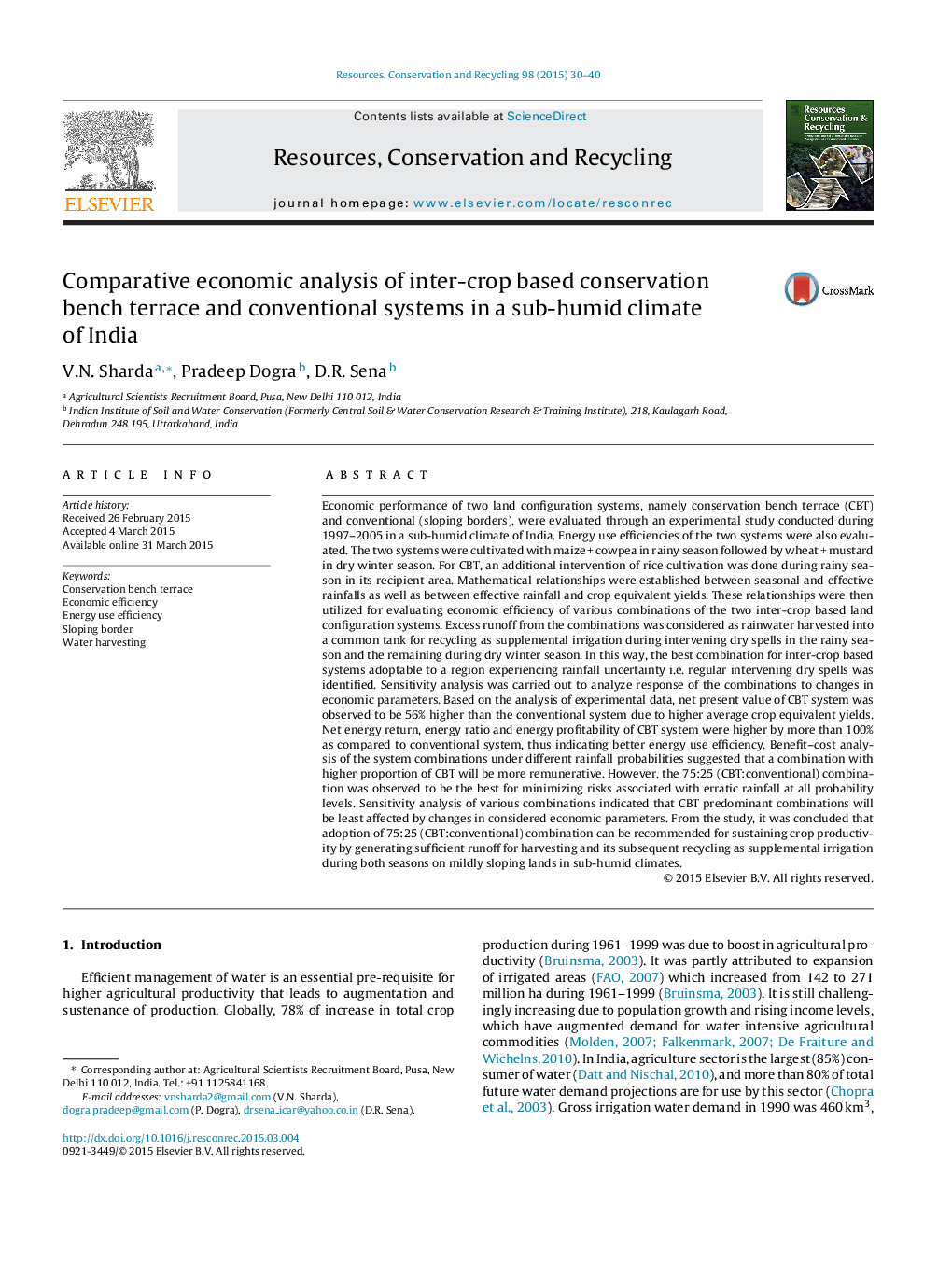| Article ID | Journal | Published Year | Pages | File Type |
|---|---|---|---|---|
| 1062927 | Resources, Conservation and Recycling | 2015 | 11 Pages |
Economic performance of two land configuration systems, namely conservation bench terrace (CBT) and conventional (sloping borders), were evaluated through an experimental study conducted during 1997–2005 in a sub-humid climate of India. Energy use efficiencies of the two systems were also evaluated. The two systems were cultivated with maize + cowpea in rainy season followed by wheat + mustard in dry winter season. For CBT, an additional intervention of rice cultivation was done during rainy season in its recipient area. Mathematical relationships were established between seasonal and effective rainfalls as well as between effective rainfall and crop equivalent yields. These relationships were then utilized for evaluating economic efficiency of various combinations of the two inter-crop based land configuration systems. Excess runoff from the combinations was considered as rainwater harvested into a common tank for recycling as supplemental irrigation during intervening dry spells in the rainy season and the remaining during dry winter season. In this way, the best combination for inter-crop based systems adoptable to a region experiencing rainfall uncertainty i.e. regular intervening dry spells was identified. Sensitivity analysis was carried out to analyze response of the combinations to changes in economic parameters. Based on the analysis of experimental data, net present value of CBT system was observed to be 56% higher than the conventional system due to higher average crop equivalent yields. Net energy return, energy ratio and energy profitability of CBT system were higher by more than 100% as compared to conventional system, thus indicating better energy use efficiency. Benefit–cost analysis of the system combinations under different rainfall probabilities suggested that a combination with higher proportion of CBT will be more remunerative. However, the 75:25 (CBT:conventional) combination was observed to be the best for minimizing risks associated with erratic rainfall at all probability levels. Sensitivity analysis of various combinations indicated that CBT predominant combinations will be least affected by changes in considered economic parameters. From the study, it was concluded that adoption of 75:25 (CBT:conventional) combination can be recommended for sustaining crop productivity by generating sufficient runoff for harvesting and its subsequent recycling as supplemental irrigation during both seasons on mildly sloping lands in sub-humid climates.
